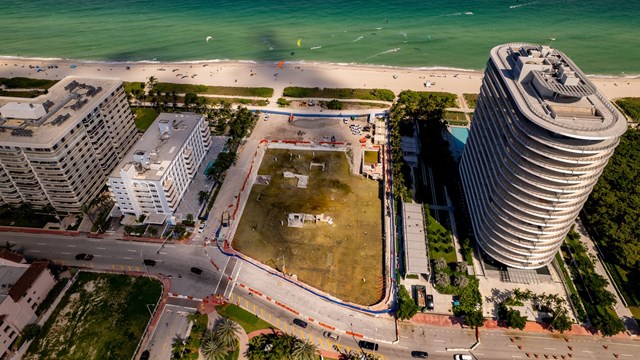When it comes to reducing energy costs in most buildings, the space heating system garners the lion’s share of attention. The performance of the hot water system is rarely considered until there is a complaint. And yet, water heating accounts for a fifth of the energy used in apartment buildings. Total heating system efficiency hovers around 50%, meaning that only half of the energy purchased ends up as hot water at the tap. While much of that wasted energy is lost due to old or out-of-tune boilers, nearly as much waste can occur in the pipes that distribute hot water throughout the building. Not only are poor distribution systems often responsible for higher costs due to energy waste—they can also lead to dissatisfied residents.
Hot Water Recirculation: Controlling for Comfort and Savings
Most multifamily buildings use a recirculation system where one or more piping loops constantly deliver hot water to apartments from the water heater in the basement. A pump keeps hot water flowing through the pipes as they gradually lose heat to the surrounding air. This minimizes wait time for hot water in the shower but results in a great deal of wasted energy. There are a variety of control system options available to reduce this waste, but the most effective control is one that operates the recirculation pump only when it is needed to maintain resident comfort. These “Demand Controls” do this by sensing when hot water is in use and whether the recirculation loop is still warm enough. Aside from insulating exposed pipes and bringing hot water supply to a constant minimum temperature, this is the most cost-effective way to reduce energy waste in your hot water system. Retrofitting an existing building with these controls costs only a few thousand dollars and can be completed in less than a day. Demand controls have been shown to reduce water heating energy bills by 10% to 15%, including both reduced pump electricity and hot water heating fuel.
Hot-Cold Water Crossover & Piping Imbalance
You may have heard a shareholder complain of cold water that never got cold or hot water that never got hot; you may have had this experience yourself. Bypass, crossover, and “ghost flow” all refer to the unintended mixing of hot and cold water that can happen at faucets, showerheads, and washing machines. Single-handle fixtures are frequently at fault, as the mixing cartridge within these valves can wear out over time and provide a pathway for crossover. This can steadily increase hot water bills for years and raise complaints from residents whose comfort is affected by the problem. The repair can be very simple, often only requiring the replacement of faulty mixing cartridges and check valves. However, locating the sources of crossover flow can be difficult. The use of data loggers and professional sensing tools allows for comprehensive investigations to pinpoint the sources of crossover. After noticing that a rooftop solar hot water system installed on a multifamily building in the Bronx was underperforming, researchers found that crossover was causing over 80% of the building’s hot water to bypass the solar panels and was being fully heated by the boiler instead. Another multifamily building showed annual savings of over 60% of their annual hot water energy use after replacing all the shower valve mixing cartridges.
Imbalanced distribution is another potential problem in recirculating systems. Whether due to the original piping design or later patchwork alterations, water temperatures can vary widely in different parts of the building. The building maintenance staff often responds by increasing the supply temperature or pump flow to satisfy the apartment with the coolest water, potentially resulting in greater energy use, safety risks, and/or damage to the pipes themselves. In some cases, hot-cold crossover flow can be mistaken for imbalance or vice-versa. Increasing the energy consumption of the system is not an efficient solution. This is a case where seeking professional advice makes sense.
Tuning Your Hot Water System
The following list covers major hot water issues and how to address them. An experienced superintendent can tackle some of these fixes independently, or at least identify problems.
• Insulation: Insulate all exposed hot water piping and storage tanks.
• Supply temperature: Pay attention to resident complaints of excessively hot water. Water that leaves the tap at 140°F or higher (we’ve measured nearly 200°F at a kitchen sink!) indicates that something needs to be corrected. The setpoint may be too high, the mixing valve may be broken, or the storage tank may not be mixing adequately.
• Controls: What kind of controls are installed; are they operating properly or overridden?
• Pressure booster: If installed, check water pressure at a top floor fixture – it should be no more than 30psi. Make sure pressure booster pumps are not shutting off and on every few seconds. The same applies for pumps equipped with variable frequency drives; ensure that these are not overridden to “hand” or bypass mode.
• Boiler pumps: Make sure that boiler pumps (if any) only run when the boiler is running. Sometimes these will not be controlled properly, and can pull extra hot water through the boilers and recirculation loop, increasing energy waste.
A critical piece in maintaining the health and efficiency of hot water systems is to make sure building staff is trained. Building staff should be familiar with the basic operation, maintenance and troubleshooting of controls and equipment. Several options are available for energy efficiency training for building operators, including the 32BJ Green Supers Program and the Building Performance Institute’s EEBOPS certification.
Heating hot water is costly—and typically wildly inefficient. However, solutions and opportunities exist to resolve these problems and to reduce waste. Commissioning and control upgrades can make systems more efficient at manageable costs. Crossover-proof shower valves and other products can stop cold water from entering hot water lines. Some of this can be accomplished by building staff; some requires the expertise of professionals specializing in multifamily hot water systems. Every building can benefit from a hot water system checkup to ensure that hot water is being produced and delivered as efficiently, safely and comfortably as possible.
Eric Ansanelli works at The Levy Partnership in New York City, where he specializes in building energy systems. Reach him at levypartnership.com.







3 Comments
Leave a Comment